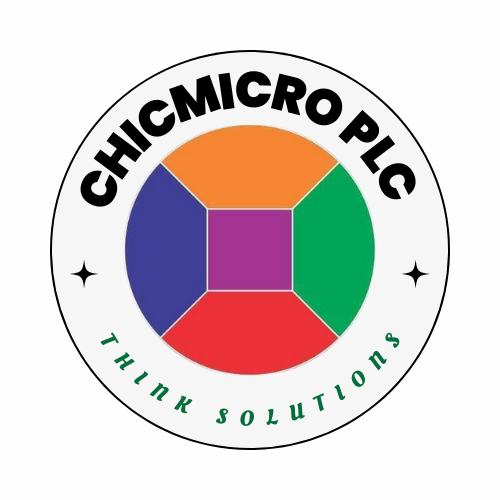
Introduction to Follow-Up Emails
Follow-up emails serve as a critical component of effective communication across various contexts. Whether it be after a job interview, a networking event, or in e-commerce situations, the significance of timely follow-ups cannot be overstated. Particularly in e-commerce, follow-up emails can play a pivotal role in managing customer relationships and enhancing sales outcomes. One common scenario where follow-up emails prove indispensable is in the case of abandoned shopping carts. Consumers often leave items in their online carts without completing a purchase, leading to lost revenue for businesses. A well-crafted follow-up email can serve as a gentle reminder, often re-engaging potential customers and encouraging them to finalize their transactions.
Furthermore, follow-up emails are more than just reminders; they can express appreciation, convey important information, and nurture the relationship between the sender and recipient. In professional settings, sending a follow-up email after an interview can significantly enhance the candidate’s chances of standing out. It demonstrates initiative and reinforces the candidate’s interest in the position. Similarly, at networking events, a follow-up email can help to solidify connections that may have been formed during brief encounters.
The effectiveness of follow-up emails is largely attributed to their capacity to personalize interactions and maintain ongoing engagement. Utilizing data analytics, businesses can tailor follow-up messages, ensuring they resonate with the recipient’s preferences and behaviors. In doing so, follow-ups serve not only as a means of communication but as a strategic tool to drive customer loyalty and retention.
In conclusion, follow-up emails are an essential aspect of professional correspondence across diverse settings, reinforcing connections and encouraging desired actions. Understanding their importance can lead to increased engagement and successful outcomes in various communications.
The Psychology Behind Follow-Up Emails
The effectiveness of follow-up emails in eliciting responses is deeply rooted in psychological principles that govern human behavior. One key concept is reciprocity, which suggests that when individuals receive something of value, they feel a natural inclination to return the favor. This principle is particularly relevant in the context of follow-up emails, as a well-crafted message can create a sense of obligation in the recipient to respond positively. For instance, if an e-commerce business sends a follow-up email thanking a customer for their purchase while offering a discount on their next order, the recipient may feel compelled to reciprocate by making another purchase.
Timing also plays a crucial role in the efficacy of follow-up emails. Research indicates that the likelihood of obtaining a response diminishes over time. Therefore, sending a follow-up email shortly after the initial contact can significantly increase the chances of engagement. For example, following up within 24–48 hours after an inquiry can reinforce the importance of the message and remind the recipient of any actions they intended to take. Likewise, the strategic use of reminders in follow-up emails can trigger memories associated with the initial interaction, prompting a response where one might not have occurred otherwise.
Moreover, the design of a follow-up email can influence the recipient’s motivation to engage. Utilizing friendly but professional language, clear calls to action, and concise information can enhance readability and encourage further interaction. Creating a visually appealing layout can cater to cognitive biases that favor aesthetic pleasure, compelling recipients to spend time engaging with the content. By understanding these psychological aspects and applying them to follow-up emails, writers can increase their effectiveness, leading to better engagement and interaction with customers in the e-commerce environment.
Best Practices for Writing Follow-Up Emails
Writing effective follow-up emails is crucial in the fast-paced world of e-commerce. To ensure that your follow-up emails resonate with recipients and achieve desired outcomes, it is essential to adopt a few best practices.
First and foremost, keeping your message concise is vital. Busy recipients often skim through emails, so ensuring that your follow-up is straight to the point can enhance clarity and engagement. Aim to communicate your message succinctly, focusing on the key information that the recipient needs to know. This includes any pertinent actions they might need to take or significant information related to their previous interactions.
Personalization is another significant factor in the effectiveness of follow-up emails. When you address a recipient by name and reference previous interactions, it cultivates a sense of familiarity and connection. Utilize any data you have about their preferences or past purchases to create a tailored message. This not only showcases your attentiveness but also fosters loyalty and interest from the recipient.
Moreover, adopting a polite and professional tone is critical. A respectful approach demonstrates your value for the recipient’s time and fosters a positive rapport. Even in follow-up scenarios where responses are delayed, maintaining professionalism can significantly influence their perception of your brand.
Lastly, a clear call to action should be an integral part of your follow-up email. Whether you want the recipient to browse new products, take advantage of a special offer, or simply respond to your inquiry, being explicit about the next steps will guide them effectively. Ensuring that your call to action is evident will help to drive engagement and facilitate your desired outcomes.
Follow-Up Email After an Interview
Following up after a job interview is a crucial step in the job application process. It not only reinforces your interest in the position but also embodies professionalism and courtesy. A well-crafted follow-up email can significantly enhance your candidacy by ensuring that you remain fresh in the interviewer’s mind.
Begin your email by expressing genuine gratitude for the opportunity to interview. For example, you might write: “Dear [Interviewer’s Name], thank you for taking the time to discuss the [Job Title] position with me on [Date]. I appreciate the opportunity to learn more about [Company Name] and the exciting projects your team is working on.” This sets a positive tone for your follow-up.
In the next paragraph, reaffirm your enthusiasm for the role and the company. You could mention a specific topic or point discussed during the interview that resonated with you, which demonstrates your engagement. For instance, “I was particularly inspired by our conversation about [Specific Project or Company Value], and I am eager to potentially contribute my skills in [Your Skills Related to the Project].” This reiteration serves to strengthen your connection with the employer, indicating that you were attentive and thoughtful during the interview.
Additionally, it is beneficial to briefly repeat one or two key qualifications or experiences that align well with the position. You might add, “As I mentioned, my experience in [Relevant Experience] has provided me with unique insights that I believe would be beneficial to your team.” This reinforces your suitability for the role and keeps the focus on your strengths.
Conclude your email with an offer to provide any further information the employer may need. A simple closing remark such as, “If there’s anything else you need from my side, please do not hesitate to reach out,” can be very effective. Finish with a courteous sign-off, reiterating your appreciation. Remember, a follow-up email is not only a chance to express thanks but also a strategic move to enhance your candidacy.
Follow-Up Email After Networking Events
Following up after a networking event is crucial in maintaining the connections made during the occasion. A well-structured follow-up email can reinforce the relationship, remind your contact of your conversation, and facilitate future interaction. When crafting your email, it is essential to reference specific points discussed during your interaction. This not only jogs the recipient’s memory but also demonstrates your genuine interest in the conversation.
Begin your email by expressing appreciation for the time spent together at the networking event. A simple opener such as, “I enjoyed our conversation at the [Event Name] on [Date]” sets a positive tone. Following this, briefly recap the main topics discussed. For instance, you could mention, “I found your insights on [Specific Topic] particularly engaging.” This approach not only personalizes the email but also shows that you were attentive during your interaction.
Next, you should include any relevant information that can benefit your contact. If applicable, share resources such as articles, tools, or contacts that relate to the conversation you had. For example, “I wanted to share an article I read about [Related Topic] that I think you might find valuable.” This establishes you as a thoughtful professional and an invaluable connection.
Lastly, invite further communication to keep the dialogue open. A line such as, “I would love to hear your thoughts on [Another Topic] or discuss potential collaboration opportunities,” encourages your contact to respond. Here is a concise template for your follow-up email:
Subject: Great Meeting You at [Event Name]
Dear [Contact’s Name],
I hope this message finds you well. I enjoyed our conversation at [Event Name] on [Date] and found your insights on [Specific Topic] particularly engaging.
I wanted to share an article I read about [Related Topic] that I think you might find valuable. Please let me know your thoughts. I would love to connect again soon.
Best regards,
[Your Name]
Follow-Up Email for Abandoned Carts in E-commerce
In the realm of e-commerce, abandoned carts represent a significant challenge, highlighting an opportunity to reconnect with potential customers. A well-crafted follow-up email can effectively remind individuals of their forgotten items, enticing them to complete their purchase. The first step in writing such an email is to personalize the message. Incorporating the customer’s name and mentioning the specific products left in their cart can create a sense of ownership and urgency.
In addition to personalization, consider the timing of your follow-up email. Research indicates that sending a reminder within 24 hours of abandonment yields the best results. This prompt communication keeps your brand fresh in the customer’s mind and increases the likelihood of conversion. Furthermore, to encourage action, offering incentives—such as discounts or free shipping—can motivate hesitant customers to finalize their purchase. For example, the subject line could read, “Your cart missed you! Here’s 10% off to complete your order!”
Another effective strategy includes addressing potential concerns that may have led to cart abandonment. Include a brief FAQ section or provide reassurance on aspects such as secure payment options, product quality, or return policies. This not only builds trust but also alleviates any hesitations that may linger in the customer’s mind.
Successful follow-up emails often blend these strategies seamlessly. For instance, a creative approach could involve using an engaging narrative, perhaps reminding customers of the benefits they might miss out on. An example could include, “Imagine enjoying your new sneakers on your next adventure—don’t let them slip away!” This method not only captures the reader’s attention but also reinforces the value of the intended purchase. By leveraging these techniques, e-commerce businesses can significantly enhance their cart recovery rates and boost overall sales performance.
Maintaining Professionalism in Follow-Up Emails
In the realm of e-commerce, follow-up emails play a crucial role in establishing and maintaining customer relationships. To ensure effectiveness, it is imperative to sustain a professional tone throughout the communication. This professionalism manifests in various facets, including language, formatting, and the thoughtful selection of subject lines.
The language utilized in follow-up emails should be clear, concise, and respectful. Avoid jargon, slang, or overly casual phrases that may detract from your professionalism. Utilize standard formal greetings, such as “Dear [Name],” and appropriate closings like “Best regards” or “Sincerely.” Such practices signal to recipients that their relationship with your business is valued and taken seriously. Furthermore, it is essential to tailor your language to the audience you are addressing, as this fosters a sense of respect and relevance.
Formatting is another critical aspect of professionalism in follow-up emails. Ensure that your emails are well-structured, with a logical flow that guides the reader through your message. Utilize short paragraphs and bullet points where necessary to enhance readability. Additionally, proper grammar and punctuation are vital; errors can undermine your credibility and imply a lack of attention to detail. It is beneficial to proofread your messages before sending them, as even minor mistakes can have significant repercussions in the e-commerce landscape.
One common pitfall to avoid is the risk of being perceived as overly persistent. While follow-ups are essential, they should be executed with tact. Overwhelming customers with frequent emails can lead to frustration or withdrawal from communication altogether. Striking a balance between demonstrating interest and respecting the recipient’s space is paramount. By adhering to these principles, your follow-up emails can maintain professionalism and foster positive interactions, ultimately enhancing customer satisfaction and loyalty.
Common Mistakes to Avoid
Writing a follow-up email can be a delicate task, and many individuals make common mistakes that can hinder their communication effectiveness. One prevalent error is being overly pushy in the message. While it is important to convey urgency or the need for a response, aggressive language or excessive repeated reminders can alienate the recipient. Instead, maintaining a polite and patient tone fosters a more collaborative atmosphere.
Another significant mistake is failing to personalize the email. Generic messages often come across as insincere and may not resonate with the recipient. It is advisable to address the recipient by their name and reference specific details from previous conversations or interactions. Such personalization can increase the likelihood of engagement and demonstrate genuine interest.
Writing overly long messages is also a common pitfall in follow-up emails. Recipients are often pressed for time, and lengthy emails may deter them from reading the entire message. To enhance clarity and readability, one should strive to communicate concisely, summarizing key points while providing essential information. Utilizing bullet points or numbered lists can be beneficial in presenting information clearly.
Additionally, neglecting to include a clear call to action (CTA) can diminish the effectiveness of the email. Readers should be prompted to take the next step, whether it involves scheduling a call or confirming a purchase. A clear and actionable request helps to guide the recipient and encourages them to respond.
Avoiding these common mistakes is crucial for crafting effective follow-up emails. By focusing on a respectful tone, personalizing messages, keeping content concise, and including a strong call to action, individuals can significantly enhance their chances of receiving a response and achieving their communication goals.
Conclusion and Final Thoughts
In this discussion on how to write a follow-up email, we have delved into the significance of effective communication in e-commerce settings. Thoughtful follow-up emails serve as a crucial tool for maintaining customer engagement and reinforcing relationships. One of the key takeaways is the importance of personalization; a well-crafted email that addresses the recipient’s specific experiences can enhance the likelihood of a positive response. Tailoring your message demonstrates genuine interest and understanding of the customer’s needs, which in turn fosters loyalty.
Additionally, we explored the various scenarios where follow-up emails can be utilized. Whether reaching out post-purchase, checking in after a cart abandonment, or soliciting feedback, each situation presents an opportunity to connect with customers and encourage future interactions. It is essential to use these moments wisely to enhance customer satisfaction and drive conversions.
Moreover, effective follow-up communication should be clear, concise, and respectful of the recipient’s time. Utilizing a structured format will help convey your message without overwhelming the reader. Remember to include a call-to-action that guides the recipient towards their next steps, whether it’s completing their purchase or merely responding with their thoughts.
Finally, it is worthwhile to practice the techniques discussed in this post. As you become more adept at writing follow-up emails, you will likely observe improved engagement and response rates. By integrating these strategies into your email communication, you can harness the potential benefits of thoughtful follow-ups, thus elevating the overall customer experience in your e-commerce endeavors. Adopting these principles can ultimately lead to increased sales and a loyal customer base.


